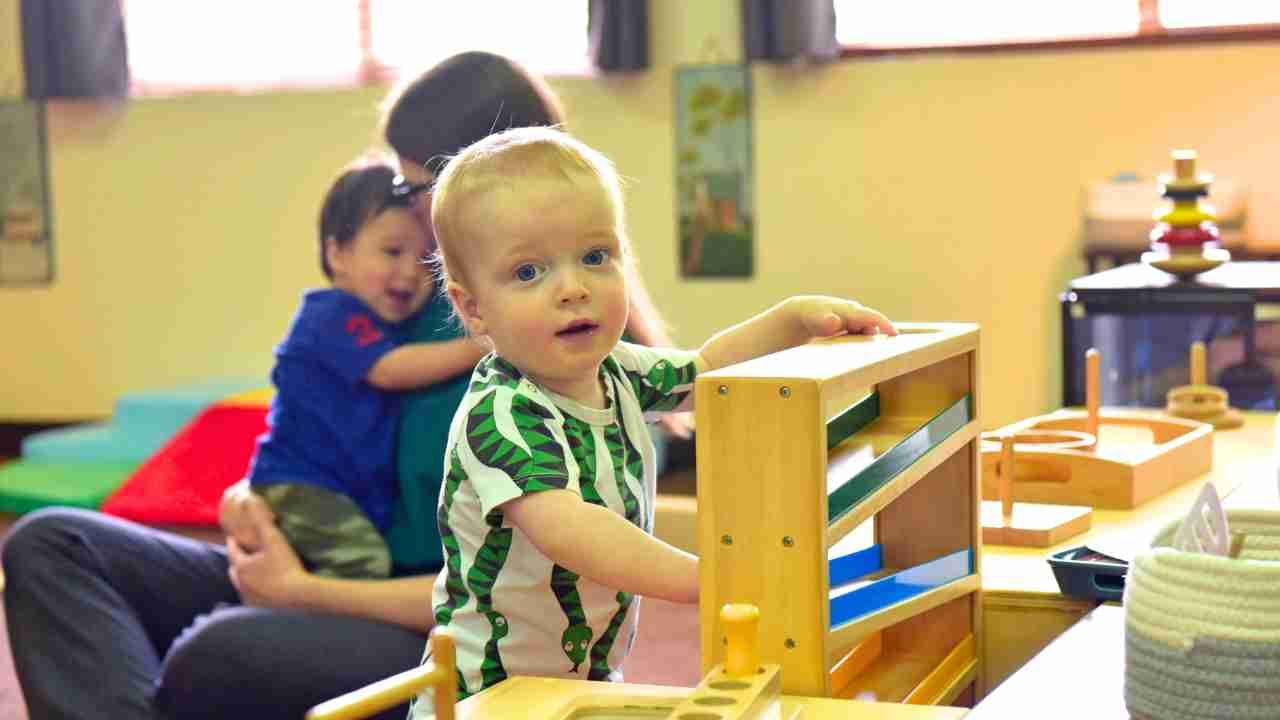
The First Plane of Development: Building the Foundation for Life
Oct 30, 2025At Butler Montessori, everything we do begins with a deep respect for how children grow and learn. Dr. Maria Montessori described human development as unfolding through four “planes,” each lasting about six years and characterized by distinct needs, interests, and ways of learning.
The First Plane of Development (birth to age six) is a period of incredible transformation. During these years, children move from total dependence to increasing independence, forming the foundation of their personality, intelligence, and sense of self. It is a time of exploration through the senses, marked by intense curiosity and rapid growth. It’s a time when children literally construct themselves from their experiences.
This is the world of Nido (6 weeks–18 months), the Young Children’s Community (18–36 months), and the Primary classrooms (ages 3–6) at Butler Montessori. Together, these environments form a continuum that honors the child’s natural drive toward independence, movement, language, and order.

A Time of the Absorbent Mind
The First Plane of Development overlaps with what Dr. Montessori called the Absorbent Mind, or the child’s unique ability to take in information effortlessly from the environment. During these early years, children learn not through lectures or lessons, but by doing. They absorb the language they hear, the culture they live in, and the habits they observe in the adults around them.
At Butler Montessori, this understanding shapes every part of our approach. The classroom environments are intentionally beautiful, ordered, and calm. Each activity, from watering a plant to tracing a sandpaper letter, meets a developmental need. The child is not only learning how to do things, but also who they are and how to live with care, purpose, and respect.

Nido: The World of the Youngest Child (6 weeks–18 months)
The Nido environment at Butler Montessori is designed for the youngest children as they begin to explore the world. Here, babies are treated as capable, active participants in their own growth. Soft lighting, natural materials, and an uncluttered space create a sense of peace and safety.
Instead of confining children, the Nido allows freedom of movement. Infants can stretch, reach, and roll, gradually strengthening their bodies and coordination. Low mirrors help them discover their reflection. Simple grasping toys, mobiles, and climbing structures invite exploration. Our Guides observe closely and respond with gentle support, helping each child develop trust and confidence.
Even at this age, the child’s work is purposeful. They are learning how to interact with their environment, to move with control, and to build the first foundations of independence. Every feeding, diaper change, and transition is done slowly and respectfully, treating each moment as an opportunity for connection.
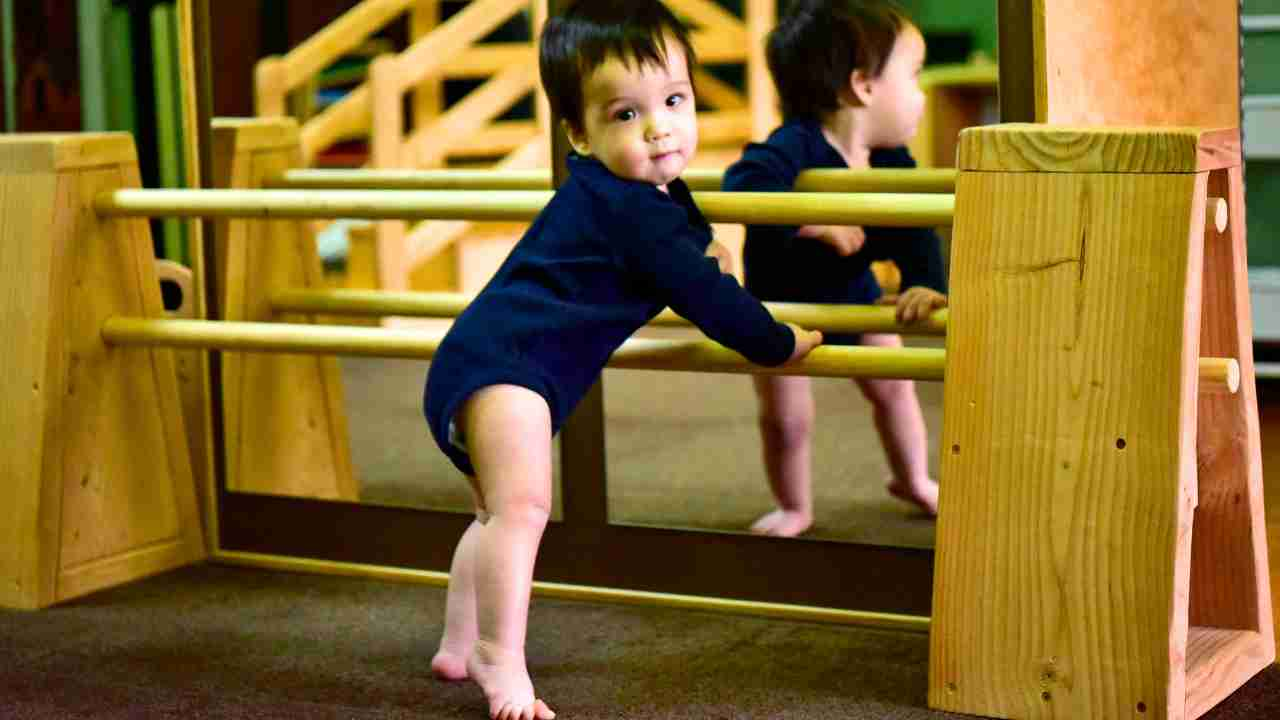
The Young Children’s Community: The Joy of Doing It Myself (18–36 months)
In the Young Children’s Community (YCC), toddlers are busy developing independence, coordination, and language. This is the age of “I do it!”, a powerful expression of the child’s need to act for themselves.
The YCC is filled with real, meaningful activities. Children wipe spills, slice bananas, sweep the floor, and care for plants. These tasks might look simple, but they meet deep developmental needs: movement, repetition, concentration, and contribution to the group.
Language blossoms in this environment. Our Guides name objects, sing songs, and engage in conversation throughout the day. Social interaction grows naturally as children learn to wait their turn, help a friend, or greet a visitor. The environment offers freedom within clear boundaries, allowing children to feel both secure and capable.
Every aspect of the YCC supports the child’s growing sense of identity and belonging. By participating in the life of their small community, children discover their own abilities and their connection to others.
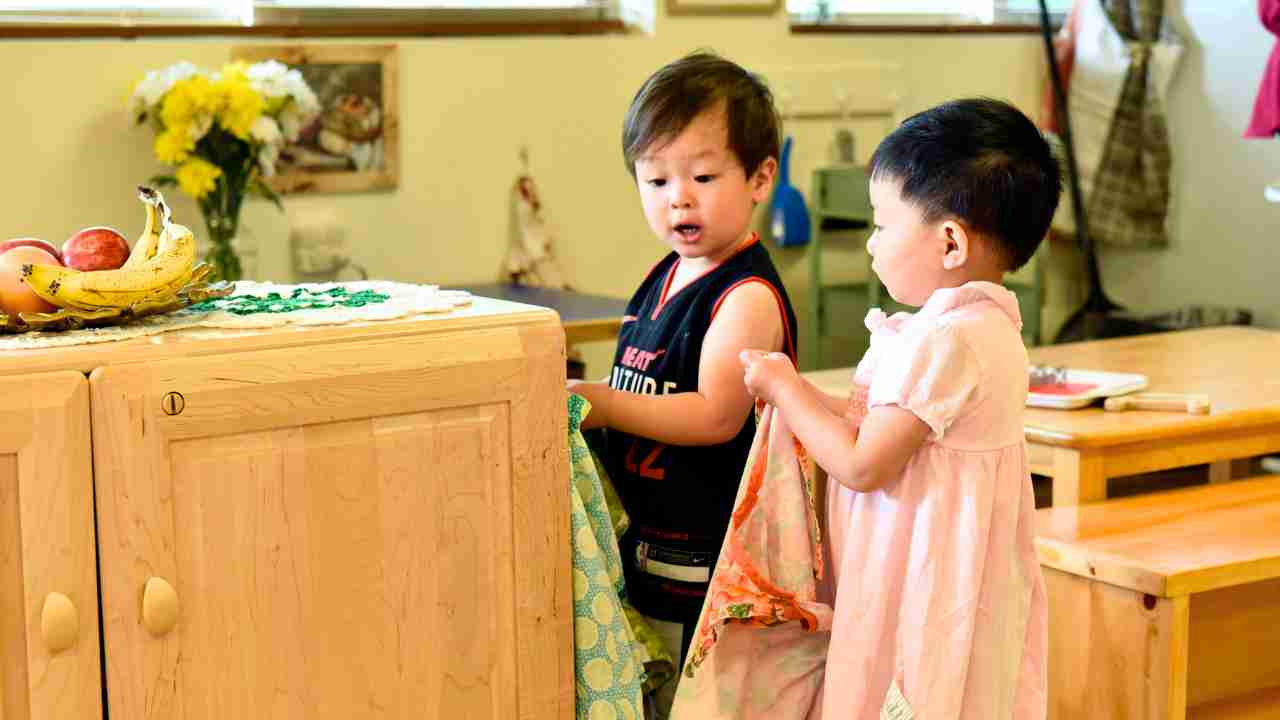
The Primary Classroom: Independence with Purpose (Ages 3–6)
By age three, children enter the Primary classroom, a rich environment that supports the second half of the First Plane. Here, learning becomes more intentional as the child transitions from unconscious to conscious absorption.
The Primary classroom includes five key areas of work: Practical Life, Sensorial, Language, Math, and Cultural Studies. Each area supports both academic and personal growth.
- In Practical Life, children pour water, polish wood, and arrange flowers. These activities refine coordination and concentration while reinforcing order and independence.
- Sensorial materials such as the Pink Tower, Color Tablets, and Geometric Solids refine the senses and prepare the mind for reasoning.
- In Language, children trace sandpaper letters, match sounds, and explore the joy of reading and writing.
- Math unfolds through hands-on exploration of number, quantity, and relationships. Children build numbers with golden beads, count long chains, and explore early geometry through patterns and shapes.
- Cultural Studies opens the door to science, geography, and art, helping children see themselves as part of the greater world.
The Primary classroom is calm yet alive with purpose. Children move independently, choose meaningful work, and stay deeply engaged for long stretches of time. The Guide’s role is to support rather than direct, helping each child progress at their own pace.
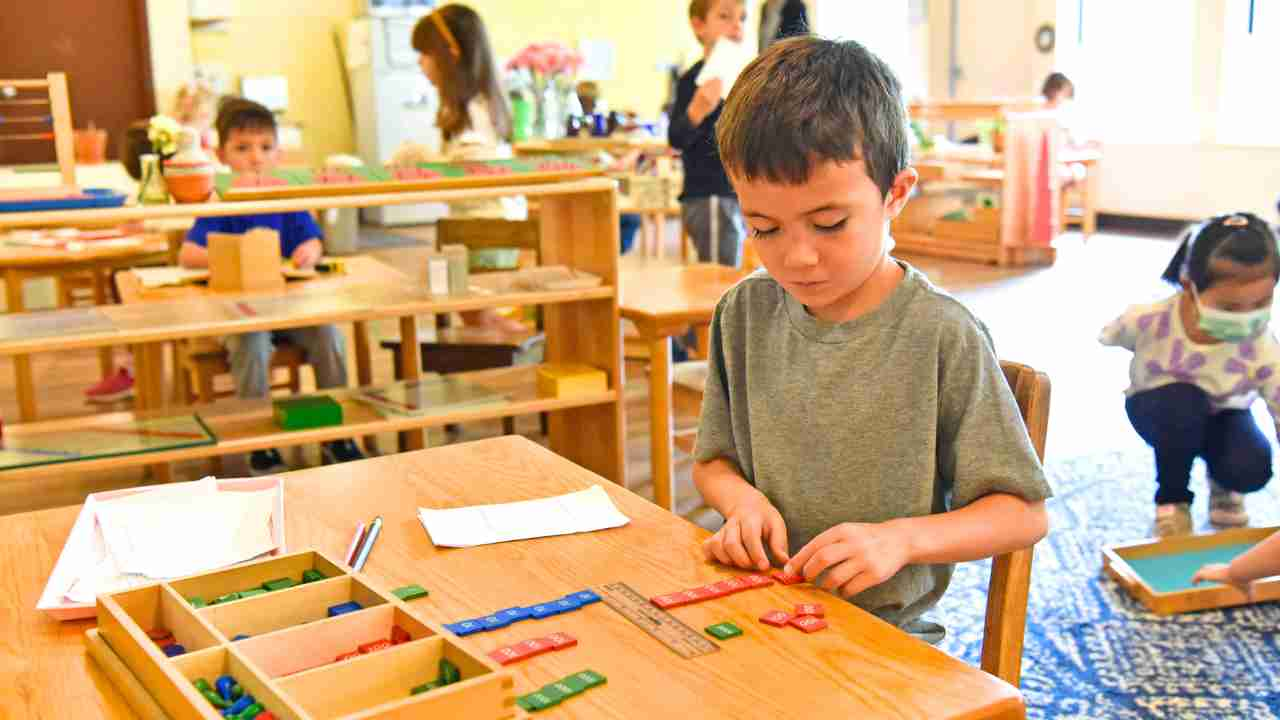
Sensitive Periods: Nature’s Blueprint for Growth
During the First Plane, children experience Sensitive Periods, which are windows of intense interest and focus on specific aspects of development, such as movement, order, language, and refinement of the senses. Montessori environments at Butler Montessori are designed to recognize and respond to these moments of readiness. When a child is in a Sensitive Period for language, for example, our Guides provide rich opportunities for vocabulary, conversation, and sound games. When a child is drawn to order, they find consistent routines and materials arranged with care.
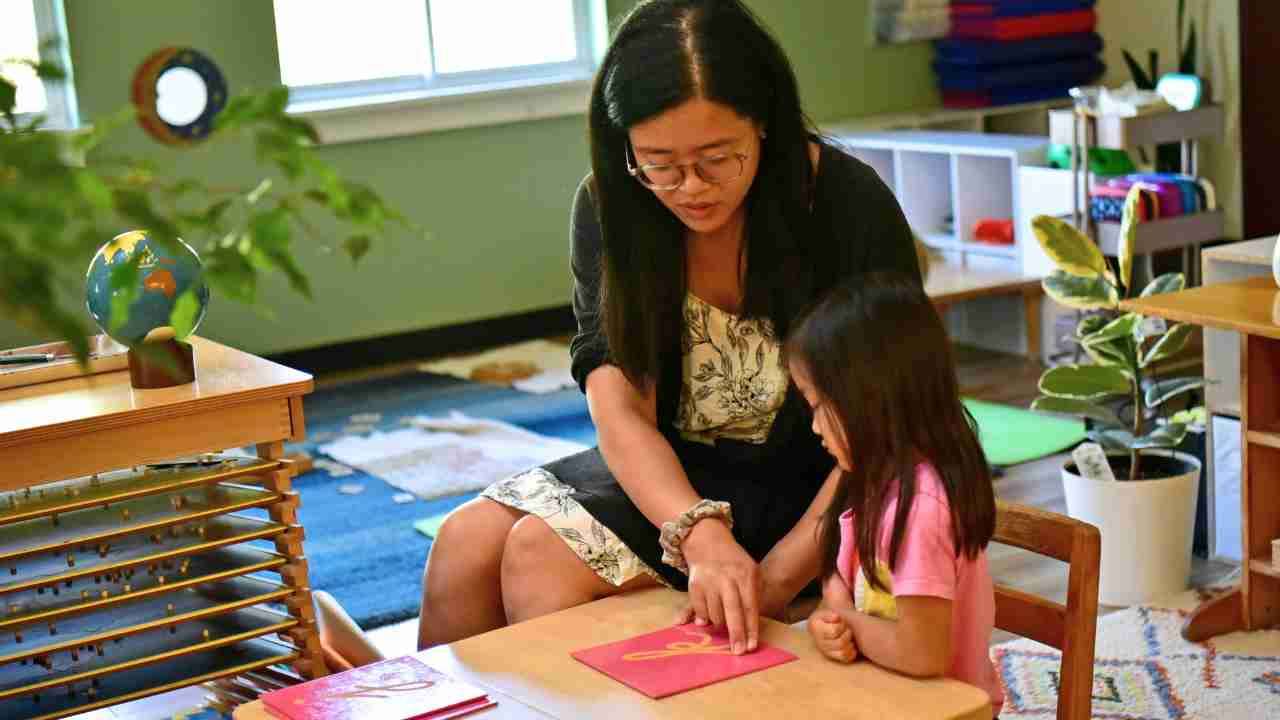
The End of the First Plane
By the end of the First Plane, around age six, a remarkable transformation has taken place. The child who once needed constant physical care now walks confidently, speaks fluently, and can care for themselves and their environment. They have internalized a sense of order, developed strong concentration, and discovered joy in purposeful work.
At Butler Montessori, this marks a natural transition to the Second Plane of Development and to the Elementary, where imagination and reasoning take center stage. The solid foundation built during the First Plane allows children to move forward with confidence, curiosity, and a lifelong love of learning.
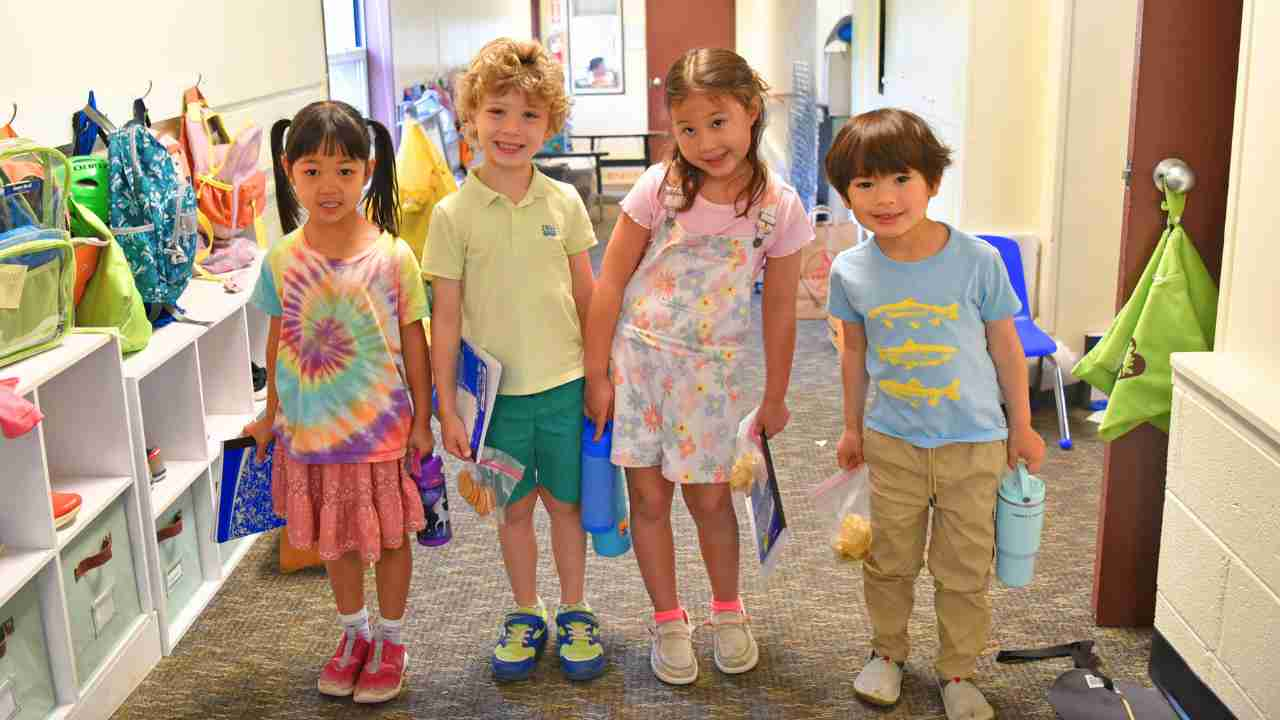
Conclusion
The First Plane of Development is the foundation of the Montessori journey. It is a time of constructing the body, the mind, and the will. At Butler Montessori, we cherish this stage because we know that the experiences of these early years shape everything that follows.
By providing environments that meet the needs of each stage, Nido, YCC, and Primary, we give children the gift of independence, confidence, and joy in discovery. The child who begins by washing a table or matching colors is quietly constructing the focus, coordination, and sense of self that will last a lifetime.
By Kelly Troung ~ Lower School Director of Education

